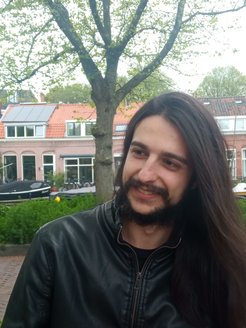Dimitris Chatzigiannakis (Greece)

chatzigiannakis @ mpia.de
The physics that shape gaseous haloes: bridging the gap between simulations and observations
Galaxy clusters are excellent probes of the large-scale structure of the Universe, due to their rarity, masses and preferential position at the knots of the cosmic web. However, these systems are fairly complex to describe, since the morphology of their extended gaseous atmospheres, known as the intra-cluster medium (ICM), is strongly influenced by physical processes that are not yet fully understood. Effects such as the nature of active galactic nuclei (AGN) feedback, referring to the interplay between the energy released by a super massive black hole (SMBH) and its surrounding gas, and the diversity in their mass assembly histories introduce uncertainties that hinder our understanding of cosmological parameters, large scale structure formation and galaxy evolution. Therefore, if we wish to increase the accuracy of our inferences we need to be able to both accurately model said processes and produce realistic haloes that are consistent with observations.
In this work, we are using the wealth of information from the IllustrisTNG simulation suite to compare simulated galaxy clusters and their lower mass counterparts, galaxy groups, with observations in an observer-like manner. We generate mock X-ray observations of the ICM, as they would be observed by X-ray telescopes such as XRISM, XMM and Chandra, including as much observational realism as possible, while analysing them in a manner consistent with observations. This way we can ensure that all systematic uncertainties due to observational realism or model assumptions are accounted for, resulting in an apples-to-apples comparison with observations. Our analysis focuses on many of the key properties of the X-ray emitting gas, such as the thermal and chemical structure of the ICM and its kinematics. We also use the simulated properties of the gas to both make predictions for future observations and provide key insights of "invisible" properties, such as the 3D properties of structures and the chemical enrichment history of the ICM, to observers.
Supervisor: Annalisa Pillepich (MPIA)
